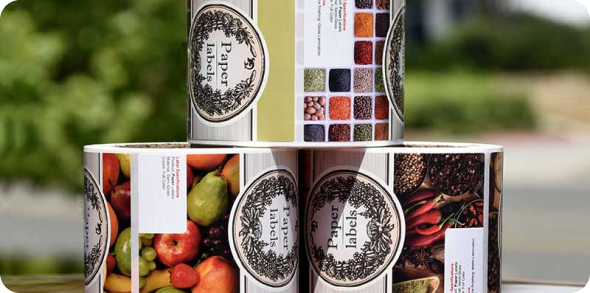Choosing the right adhesive is necessary for choosing the right label and avoiding problems in the future. Of course, on one hand, you do not need to worry too much about the technical parameters of the label adhesive, but on the other hand, it is important to have some basic knowledge about adhesives so that you can avoid problems in the future. It is possible to encounter any of the following problems:
- The label comes off the surface right after application, i.e., the label does not stick to your product’s surface.
- The label comes off the surface of your product some time later. It is possible for a week or so to go by and for you to notice that the labels have started to come off.
- Bubbling
- The label can come off the surface when kept in a damp or cold environment.
- Etc.
Rubber-based and acrylic-based Adhesives
Adhesives typically are available in two different types: rubber-based and acrylic-based. For pressure-sensitive adhesives, rubber may be chosen as the base material because it adheres well to a wide range of materials and surface types, it works well in low-temperature conditions, and it is more cost-effective compared to acrylic adhesives. Acrylic labels, on the other hand, can adhere to products kept in a much larger temperature range and they provide resistance to UV light. Like rubber, acrylic provides great long-term adhesion, but it’s not well-suited for plastic surfaces and is better for use with other types of materials.
Hot-Melt, Solvent and Emulsion Adhesives
According to the liner application method, adhesives can be divided into three groups: Hot-Melt, Solvent, Emulsion.
We will not go into too much detail with the technical details because the physical characteristics are more important for you, such as what adhesive works better on what surface or in different temperature settings.
There are many types of adhesives based on those characteristics. Some of these characteristics include:
- What temperature settings the label application will take place in
- What temperature settings the product will be kept in
- Whether the product will be stored in damp conditions
- Whether the product will be stored indoors or outdoors
- Whether the product will be exposed to UV rays
- Etc.
Permanent, Aggressive and Removable Adhesives
We have simplified this sorting and divide the adhesives into three main groups based on their physical characteristics: Permanent, Aggressive and Removable.
Aggressive adhesives are used on rougher surfaces, products that need to be kept in the freezer, and on any products in general that require the labels to be extremely sticky. Aggressive adhesives are also used for labels on tubes with a small diameter (up to 1 inch). This is due to the fact that the bending tension of the material caused by the small diameter (large curvature) of the tube will cause the label to come off the tube over time if a regular adhesive is used.
Removable adhesives are used when it is necessary to remove the label from the product after some time without leaving marks on the product. An example of a removable adhesive is the instructional label that attached to your newly purchased TV screen that you remove easily.
Permanent adhesives are used in all other cases. These are the most common and least expensive adhesives.



